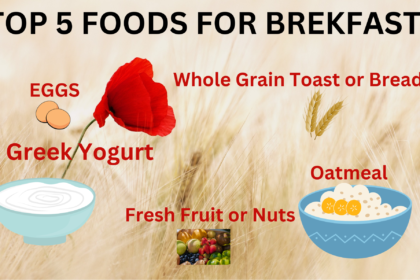low-carb diet:
A low-carb diet is a way of eating that limits the consumption of carbs, which are mostly found in grains, starchy vegetables, fruits, and sweet foods. A low-carb diet aims to limit your overall intake of carbohydrates, which will alter how your body uses and processes carbohydrates for energy. Low-carb diets come in a variety of forms, and the precise rules can change, but the following are basic essentials:
- Reduced Carbohydrate Intake: A low-carb diet restricts the amount of carbohydrates you consume, such as those found in bread, pasta, rice, potatoes, and sweet snacks. The level of carb restriction varies depending on the plan, with some encouraging a moderate intake and others very little.
- Focus on Protein and Fat: You normally increase your diet of protein-rich meals such as lean meats, fish, eggs, and dairy products to make up for the decreased carbohydrate intake. You also incorporate healthy fats like olive oil, almonds, seeds, and avocados.
- Types of Low-Carb Diets: There are different types of low-carb diets, including:
- Ketogenic Diet (Keto): This diet seeks to put the body into a state of ketosis, when it predominantly burns fat for energy instead of carbohydrates. It is extremely low in carbohydrates and rich in fat. Typically, less than 50 grammes of net carbohydrates per day are needed to enter ketosis. click here for more details about keto.
- Low-Carb, High-Fat (LCHF) Diet: Similar to keto but with a slightly higher carb intake. It focuses on healthy fats and moderate protein.
- Atkins Diet: The Atkins diet is divided into phases, starting with very low carb intake and gradually increasing it. It emphasizes protein and fat.
- Low-Carb Mediterranean Diet: Combines elements of a low-carb diet with the principles of the Mediterranean diet, including plenty of vegetables, healthy fats, and lean protein.
- Potential Benefits:
- Weight Loss: Low-carb diets can lead to weight loss, primarily because they reduce calorie intake and can help control hunger and cravings.
- Blood Sugar Control: For people with diabetes or insulin resistance, low-carb diets can help stabilize blood sugar levels.
- Improved Heart Health: Some low-carb diets promote heart health by reducing saturated fat intake and increasing healthy fats.
- Potential Drawbacks:
- Nutrient Deficiencies: Severely restrictive low-carb diets may lead to nutrient deficiencies if not well-balanced.
- Ketosis Risks: In the case of a ketogenic diet, some people may experience side effects like the “keto flu” during the initial adaptation phase. It’s essential to stay hydrated and monitor your health while in ketosis.
- Sustainability: Low-carb diets can be challenging to maintain in the long term, and some people may find them socially isolating or difficult to follow.
- Individual Variation: Remember that each person will respond to a low-carb diet differently. It’s critical to select a strategy that supports your preferences and health goals. It is advised to speak with a healthcare provider or licensed nutritionist before beginning any diet plan.
The suitability of a low-carb diet ultimately depends on your own needs, lifestyle, and health objectives. It’s crucial to concentrate on the quality of the carbohydrates, lipids, and proteins you eat, pick meals that are high in nutrients, and keep track of your diet-related improvements. In addition, think about adopting a long-term strategy for healthy eating rather than relying entirely on crash diets for long-term wellbeing.





2 Comments
Javed Iqbal
September 22, 2023 at 3:29 pmDiet plan for diabetic type 2 fasting 125 random 180
admin
September 22, 2023 at 4:13 pmhttps://eatitwell.com/diabetes-meal-plan/